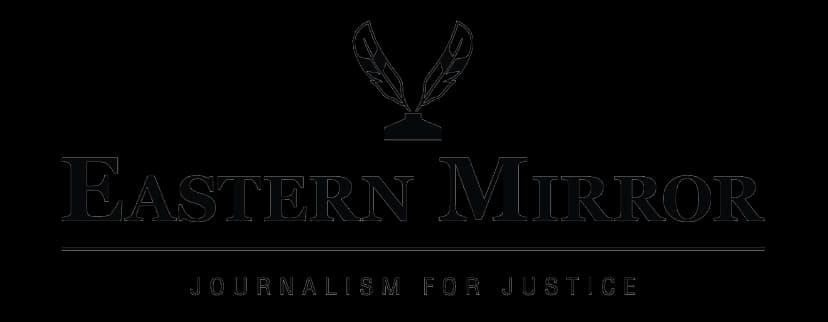SATURDAY, JUNE 21, 2025
- Home
- Nagaland launches drive targeting over 9 lakh beneficiaries under DA-JGUA scheme
Nagaland launches drive targeting over 9 lakh beneficiaries under DA-JGUA scheme
Nagaland targets over 9 lakh tribal beneficiaries through the Dharti Aaba Janjatiya Gram Utkarsh Abhiyan to saturate welfare schemes.
Published on Jun 18, 2025
Share

KOHIMA — About 9.15 lakh people in Nagaland are expected to benefit from the newly launched Dharti Aaba Janjatiya Gram Utkarsh Abhiyan (DA-JGUA), a central government initiative aimed at saturating welfare schemes and programmes for tribal communities.
Nationally, the programme targets over 5 crore tribal beneficiaries.
Advisor for Tribal Affairs and Election, H Tovihoto Ayemi, while launching the state-level awareness and benefit saturation camp at the deputy commissioner’s office in Kohima on Wednesday, said that 608 villages and 70 blocks across Nagaland will benefit from the scheme.

With India aiming to become a Viksit Bharat (developed nation) by 2047, Ayemi stressed that Nagaland must “grow together” with the rest of the country.
Only when the state is developed will the nation be developed, he said, while also acknowledging that Nagas as a tribal community are still “far behind”.
The scheme has been initiated with a budgetary outlay of nearly INR 80,000 crore across 17 line ministries at the Centre.
Ayemi urged all 15 implementing departments in Nagaland to work collectively towards uplifting citizens and developing rural areas.
He appealed to district heads of departments to collaborate and ensure the benefits reach the people, thus contributing to the vision of a developed India.
Also read: Nagaland adds 1 MW power with Ponglefo Small Hydro Project inauguration
Neiphiu Rio calls for accountability in central fund use at Viksit Nagaland meeting
He pointed out that while various government schemes have aimed to improve the lifestyle of tribal communities in the past, the current initiative focuses intensively on holistic development, ensuring that no community is left behind.
Highlighting Nagaland’s position “as a tribal population state”, Ayemi expressed hope that the state would set an example for others to follow.
He assured that the Ministry of Tribal Affairs would monitor the implementation of all components of the scheme.
He also stressed the importance of last-mile delivery and said the schemes must reach even the remotest villages.
Referring to the poor infrastructure in government schools in rural areas, Ayemi suggested that these schemes could be effectively used to upgrade such facilities.
He urged departments to use the funds judiciously to bridge critical gaps and truly benefit the people.
State Nodal Officer of DA-JGUA, Imsumeren, shared that the scheme will cover all 17 districts of Nagaland, including the newly created district of Meluri.
He detailed the breakup: Chümoukedima – 4 blocks, 46 villages; Dimapur – 4 blocks, 16 villages; Kiphire – 5 blocks, 40 villages; Kohima – 5 blocks, 27 villages; Longleng – 3 blocks, 20 villages; Mokokchung – 9 blocks, 48 villages; Mon – 8 blocks, 76 villages; Niuland – 1 block, 4 villages; Noklak – 3 blocks, 26 villages; Peren – 4 blocks, 38 villages; Phek – 8 blocks, 43/44 villages; Shamator – 2 blocks, 16 villages; Tseminyu – 2 blocks, 22 villages; Tuensang – 5 blocks, 36 villages; Wokha – 7 blocks, 53 villages; Zunheboto – 8 blocks, 85 villages; and Meluri – 11/12 villages.
He said the scheme aims to improve the socio-economic conditions of tribal communities by saturating tribal-majority villages with key welfare services.
The scheme includes 25 interventions from 17 line ministries, and will run from 2024–25 to 2028–29.
Joint Secretary of Tribal Affairs, TL Kiusumong Tikhir, highlighted that many initiatives have been launched under DA-JGUA to address tribal development gaps.
Calling it a semi-convergent programme, he stressed the need for seamless coordination among all line departments to ensure its success.
District magistrates and deputy commissioners will coordinate with departments to conduct specific camps at the village, block, and district levels.
Tikhir mentioned that many tribal villages still lack access to services such as Aadhaar enrolment.
The programme will focus on saturation of services including PM-KISAN, KCC, PMJAY, CMHIS, Jan Dhan Yojana, MUDRA loans, and various Social Welfare and Rural Development schemes.
Deputy Commissioner of Kohima, B Henok Buchem, stated that the awareness and benefit saturation camp is a 15-day programme, with outreach activities planned in multiple villages.
Representatives from line departments and government agencies attended the launch.

